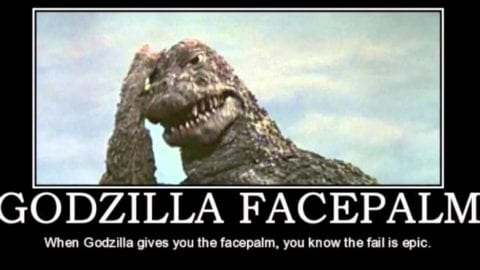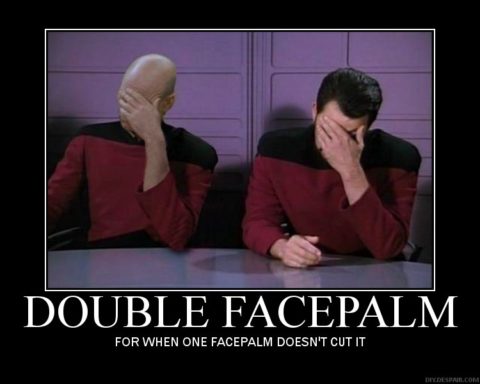In the US, it’s a holiday weekend, and as a result I had considered taking today off. Then I saw something on TV that made me think that at least a brief post (well, for me, anyway) would be in order. To understand what changed my mind, I’ll give a little background first. Being the boring old farts that we are, my wife and I typically spend our Saturday nights watching TV, usually Animal Planet. In particular, we like Dr. Jeff, and we like The Zoo, which is focused on the San Diego Zoo this season. While flipping channels, though, I came across this:
I don't think that subjecting elephants to acupuncture quackery, as a commercial for tonight's episode of #TheZooSD shows, is showing love for elephants. I'll be watching to set how bad it is.🤦🏻♂️ https://t.co/FlEo0Buibg
— David Gorski, MD, PhD (@gorskon) August 31, 2019
Et tu, San Diego Zoo?
So I decided to watch, you know, to see how bad the episode was. Sadly (and I do mean sadly), another major segment in the show featured the zookeepers and staff preparing to send a panda who had been at the San Diego Zoo for 23 years back to China. That storyline was genuinely moving, as ono zookeeper who had cared for the panda for over 20 years had to deal with sending her charge away. I’m just glad that my wife and I got to see the pandas last year, before they were shipped back to China.
Then, sadly, but for a much different reason, there was the other storyline. It featured Tembo, the “retired Hollywood elephant.” She’s 48 years old and apparently has arthritis in her rear hip and one of her legs. The segment started out benignly enough, with a zookeeper approaching the elephant exhibit with food and to observe how she moves to assess the stiffness in her right front leg. It looks like a fairly standard training/assessment session. A veterinarian accompanied the zookeeper and noted that she thought that Tembo was favoring a leg.
Then I saw it, the zookeeper saying:
To address the pain that Tembo’s been experiencing, it’s important for us to always think out of the box. So Dr. Beth will be coming in the next few weeks to provide her with some acupuncture. Dr. Beth has provided acupuncture treatment to a variety of animals at the zoo with great success. Tembo’s the first elephant we’ll be attempting that with, and we’re really hopeful to see some positive effects with it.
My reaction? I bet you can guess:
Sadly, apparently to the staff at the San Diego Zoo, “outside the box” means “embrace quackery”. My first reaction (after the facepalm, that is) was: How do the zookeepers know that the acupuncture on the other animals has had “great success”? We’ve discussed animal acupuncture here on multiple occasions before. As veterinarian David Ramey has described, there’s no good evidence that acupuncture works in animals, to which I would add that there’s also no good evidence that acupuncture works in humans. He also notes, as we have bene saying all along, that there’s no good evidence that acupuncture points exist in people, much less animals; indeed, as Harriet Hall and Steve Novella described just this week, even acupuncturists can’t define where acupuncture points are in humans, nor can they agree where they are.
As I’ve said before many times, it doesn’t matter where you stick the needles in (“acupuncture points” or not) and it doesn’t even matter if you stick the needles in (toothpicks work as well), the effect is the same, nonspecific and placebo. As we say, acupuncture is a theatrical placebo. In its present form, it isn’t even ancient, particularly for animals. Indeed, the filiform needles currently used by acupuncturists were only introduced in the 1930s.
But, wait, you say! Can there be placebo effects in animals? Of course there can be, but it’s not the same as placebos in humans. Rather it’s something that’s sometimes called transferred or caregiver placebo effects. After all, animals can’t tell us how they are doing or if they’re in pain. The way we assess how animals feel is by what we observe, and it’s known that humans who think their dog has been treated is more likely to say that the dog’s health has improved. Basically, acupuncture is even more clearly quackery in animals than it is in humans, and that’s saying a lot. It’s a fraud. So it’s incorrect that animals aren’t subject to placebo effects; it’s just that those effects are mediated through the caregiver.
So about halfway through the episode, we’re treated to Dr. Beth Bicknese and Lead Mammal Keeper Robbie Clark bringing Tembo into a building and subjecting her to needles stuck into her skin. Before this, Dr. Beth describes how she was certified in animal acupuncture and has been using acupuncture on animals around the zoo for a while now. She opines about how chronic pain, such as what Tembo has been experiencing from her arthritis is just the sort of condition that responds well to acupuncture. She describes how regular acupuncture needles are too thin and weak to get through the thick skin of an elephant. Her solution to this problem? She uses larger syringe needles, with the acupuncture needles going through it. (Who knew that the Seldinger technique works for acupuncture?) While she’s getting ready to stick needles into Tembo, Dr. Beth continues to describe what she’s doing, in particular how her goal is not to hit the “pain fibers,” but to hit the “non-pain” fibers, or the pressure and heat fibers, so that we can “try to remind the nervous system that there are other impulses other than pain.” My reaction, besides WTF?
This:
Dr. Beth further described how she used horse acupuncture points because elephants most resemble horses. Of course, there is no evidence that acupuncture does anything whatsoever other than puncturing the skin; so what Dr. Beth is shown doing in this segment is still utter quackery. She even pulls the “bait and switch” of using electroacupuncture (which is not acupuncture).
The quackery gets even worse, though. Remember thermography? Remember how it’s utter quackery, the sort of thing naturopaths use to “diagnose” everything from breast cancer to “inflammation“? Yes, Dr. Beth brought in Dr. Barbara Durrant, Director of Reproductive Physiology, to do thermography on Tembo. (They called it “thermal imaging,” but it was really thermography.) Here’s the thing, though. Even when appropriately used, thermography is very dependent upon a lot of conditions, including the temperature of the room in which it is used, how long the subject of the thermography has been in the room to acclimate and have skin temperature. In any event, Dr. Durrant describes how the red areas (higher temperature/heat) are where Tembo is feeling pain due to inflammation. On what evidence is this based? None. Thermography isn’t even validated for humans, much less for elephants, the thermography camera being used doesn’t even look all that sophisticated, and all we’re treated to is a subjective reading of the “heat signatures.” They didn’t even appear to do any computer image analysis. Or maybe they did and just didn’t show it on the episode, but even in that case it would still have been quackery. The episode ends showing Tembo playing in the mud, her pain supposedly relieved by the acupuncture, with Robbie Clark intoning:
Playing in the mud is actually good personal skin care. It can act as sunscreen and insect repellent for her. It’s great to hear that the heat in Tembo’s right hip has decreased, which lets us know that the acupuncture is working. Diagnosing and treating elephants is tough. We’ve put a lot of time and attention into Tembo’s medical care, and we’ve seen a lot of progress, and that’s something that we’re really excited about. We really look forward to seeing Tembo continue to thrive with us here at the zoo.
Obviously, I don’t expect much better from Animal Planet. It’s a TV network. Its interest is in showing what its audience wants to watch, almost regardless of whether it’s scientifically accurate or supportable or not, and showing an elephant getting acupuncture is, without a doubt interesting. To me it’s interesting for all the wrong reasons, but for an audience that doesn’t realize that acupuncture is quackery, it’s still interesting. The San Diego Zoo, on the other hand, is one of the premier zoos in the country, if not the world. One would expect that it would provide only the best science-based veterinary care for its animal charges. I expect quackery like elephant acupuncture perhaps in Asia, where belief in traditional Chinese medicine is more embedded in the culture than it is here. Indeed, there are stories of elephants that have been “cured” of various ailments in Singapore. In the US, however, one would normally expect evidence- and science-based animal care, not quackery.
Clearly, that is not the case, at least not in San Diego. An episode of The Zoo:San Diego just showed one of the zoo’s vets subjecting an elephant to rank quackery and describing how she’s used the same quackery on many other animals at the zoo. Of course, one can look at this another way. Presumably, to be a veterinarian at one of the most prestigious zoos in the country, you have to be the cream of the crop. If what is presumably one of the very best vets in the country has embraced quackery like acupuncture and thermography, what hope does the profession have for being evidence- and science-based?



